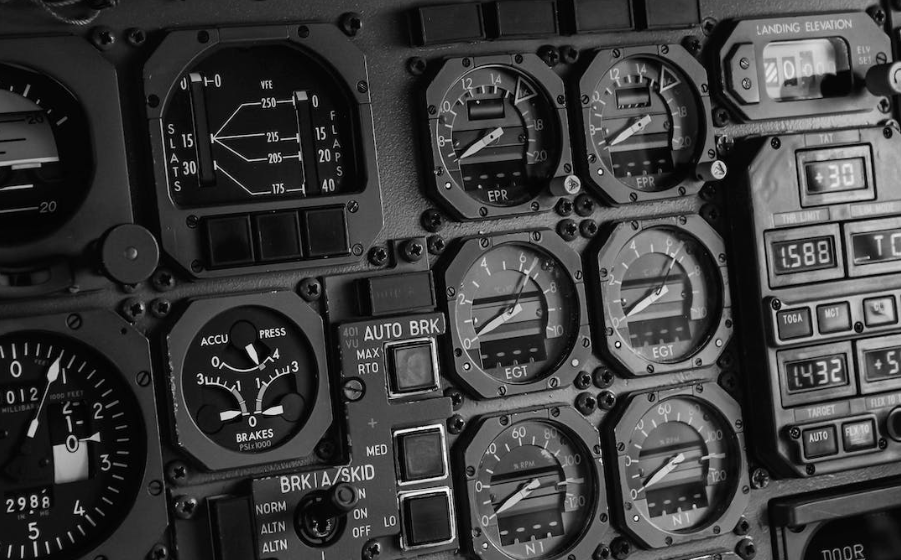Tech
From Nose to Tail: A Deep Dive into the Anatomy of an Airplane

The complex anatomy and efficient operation of an airplane enable the wonder of flying. From the nose to the tail, each component serves a crucial purpose, contributing to the aircraft’s ability to soar through the skies. This article explores the amazing intricacies of the different components that comprise an airplane’s anatomy. By exploring the details of an airplane’s anatomy, you gain a profound appreciation for the synergy of engineering and technology.
1. Cockpit and Nose Section:
The cockpit and nose sections constitute the command center of an airplane, playing a pivotal role in the aircraft’s operation and navigation. The cockpit, positioned at the front of the aircraft, is the designated space for the flight crew, housing the pilot and co-pilot seats, control panels, and various instruments. Here, aviators manage critical functions, including navigation, communication, and systems control. The nose section, adjacent to the cockpit, accommodates avionics systems, radar equipment, and weather instruments. Avionics contribute to the aircraft’s overall electronic systems, aiding in navigation, communication with air traffic control, and monitoring weather conditions. The seamless integration of these components in the cockpit and nose section ensures that flight crews have the necessary tools and information to operate the aircraft safely and efficiently, emphasizing their crucial roles in the aviation ecosystem.
2. Fuselage:
The fuselage stands as the central structure of an airplane, acting as its main body and housing an array of essential components. This elongated section provides the framework for passenger and cargo compartments, playing a crucial role in maintaining the aircraft’s overall structural integrity. Within the fuselage, the wings are securely attached, facilitating lift during flight. Additionally, the empennage, consisting of the tail and stabilizing surfaces, is located at the rear, ensuring stability and control. The fuselage also accommodates the aircraft’s engines, which contribute to propulsion. Its design takes into consideration aerodynamics, weight distribution, and the integration of various systems, making it a critical element for the functionality and performance of the entire aircraft. As a hub that connects and houses key components, the fuselage is integral to the seamless operation of the airplane.
3. Wings:
Wings stand as the fundamental lifting surfaces of an airplane, showcasing a meticulously designed aerodynamic structure essential for flight. Through their unique shape and configuration, wings generate the vital force of lift, enabling the aircraft to ascend into the skies by overcoming the gravitational pull. The aerodynamic principles governing wing design involve creating a pressure differential, with faster airflow above the wing resulting in lower pressure, effectively lifting the aircraft. Additionally, wings incorporate movable components such as flaps and slats strategically positioned to enhance control and maneuverability during various phases of flight. These adaptive features contribute to the aircraft’s overall performance and stability, showcasing the intricate balance between aerodynamics and functionality in aviation design.
4. Empennage:
The empennage, positioned at the tail of the airplane, plays a pivotal role in ensuring stability and control throughout the flight. Comprising the horizontal stabilizer, vertical stabilizer, and crucial control surfaces like elevators and rudders, the empennage is integral to the aircraft’s aerodynamic equilibrium. The horizontal stabilizer counters pitch variations, maintaining a level flight attitude, while the vertical stabilizer addresses yaw movements, preventing side-to-side oscillations. Elevators control the pitch, influencing the aircraft’s nose-up or nose-down orientation, and rudders manage yaw, facilitating left or right turns. Together, these components within the empennage contribute to the aircraft’s overall maneuverability and responsiveness, underscoring their significance in the intricate dynamics of flight control.
5. Engines and Tail Section:
Engines, situated either on the wings or fuselage, are the powerhouse of an aircraft, delivering the thrust needed for propulsion. These sophisticated machines are critical aircraft parts for achieving takeoff, maintaining altitude, and facilitating controlled descent. Modern aircraft often feature multiple engines, providing redundancy for enhanced safety. The tail section, encompassing the rear fuselage and empennage, plays a dual role. Beyond structural integrity, it accommodates vital systems such as the Auxiliary Power Unit (APU). The APU serves as an onboard power source, ensuring the availability of electricity and hydraulic power when the main engines are not running. This integrated design showcases the synergy between the tail section, engines, and auxiliary systems, collectively contributing to the aircraft’s performance and functionality.
Conclusion:
Understanding the anatomy of an airplane unveils the precision and engineering mastery required for safe and efficient flight. Each component plays a vital role in harmonizing the forces that enable an airplane to navigate the skies with grace. Next time you board a plane, take a moment to appreciate the intricate symphony of aerodynamics, mechanics, and materials that work seamlessly together, allowing these incredible machines to conquer the skies with precision and reliability.
-
Blog1 year ago
MyCSULB: Login to CSULB Student and Employee Portal – MyCSULB 2023
-
Android App3 years ago
Cqatest App What is It
-
Android1 year ago
What Is content://com.android.browser.home/ All About in 2023? Set Up content com android browser home
-
Software2 years ago
A Guide For Better Cybersecurity & Data Protection For Your Devices
-
Latest News2 years ago
Soap2day Similar Sites And Alternatives To Watch Free Movies
-
Android2 years ago
What is OMACP And How To Remove It? Easy Guide OMACP 2022
-
Android3 years ago
What is org.codeaurora.snapcam?
-
Business2 years ago
Know Your Business (KYB) Process – Critical Component For Partnerships





















